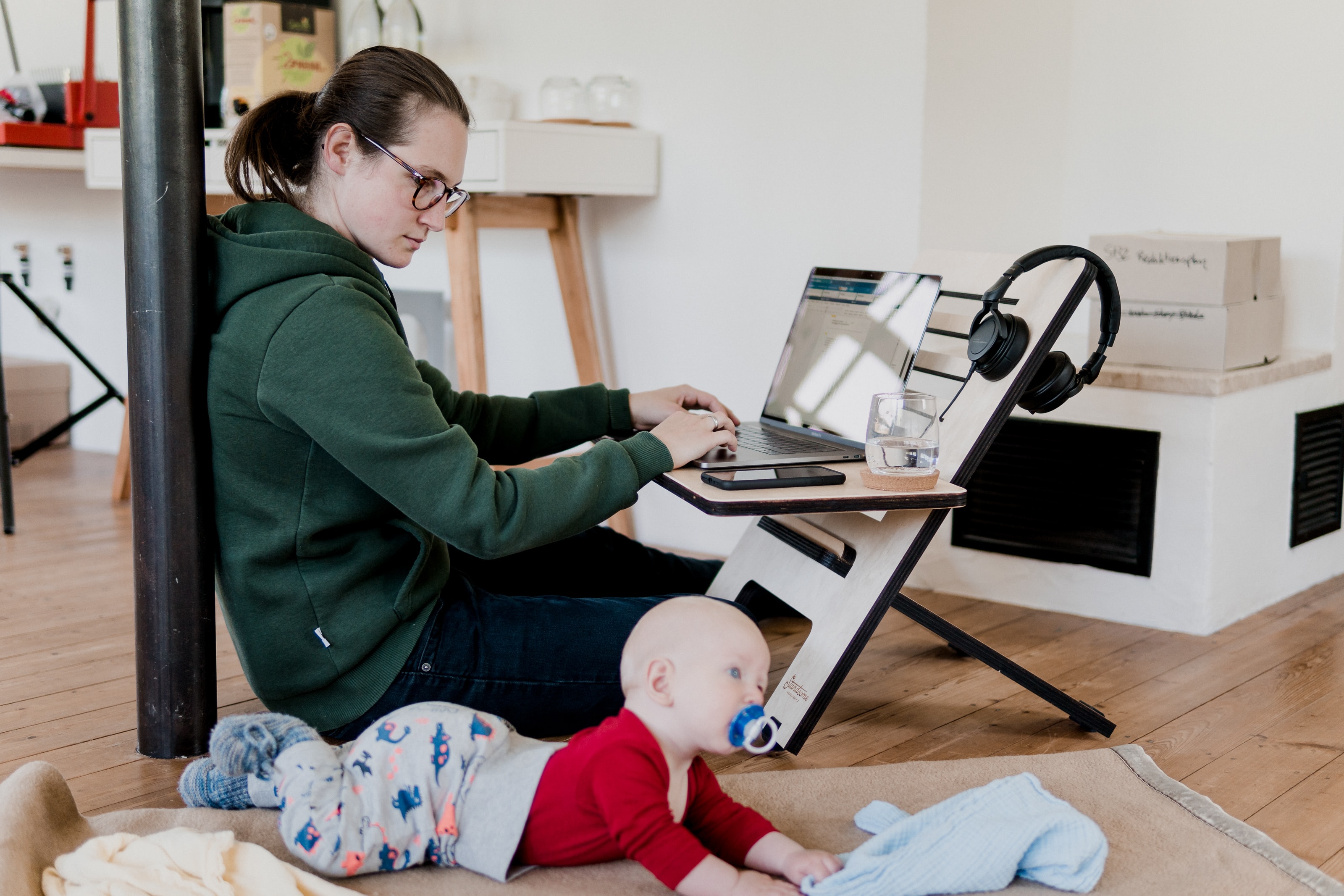When you’re going through the adoption process, one thing to consider is what kind of adoption you want. Did you know that there are actually three types of adoptions? Each one has its own pros and cons to weigh and think about. It really just depends on how you’re feeling personally and what kind of relationship that you want to have with your child and the adoptive family. So what exactly are the open and closed adoption options? What are the pros and cons of each one? How do I make the best decision for me and my child? Is it possible to change an open adoption to closed or vice versa?
Open Adoption
An open adoption involves direct communication and a relationship between the family triad (birth family, adoptive family, and adoptee). Every triad is unique, so there’s no right or wrong way to have an open adoption. Some birth families are very comfortable with talking to the adoptive family and adoptee frequently, while others may just want to contact them every now and then. Adoptive families are usually wanting the birth family to visit if at all possible whenever is convenient for them. However, some birth families may just be content with the occasional phone call. Again, it really depends on what is comfortable for the birth family.
If you decide to go with an open adoption, you can begin a relationship with the adoptive family as soon as you choose them from the plethora of parent profiles. Not only that, but you can also have a relationship with your baby even after the adoption is over. There are many different types of ways to keep in contact with your baby and the adoptive family: Facetime, social media, phone calls, text messages, emails, in-person visits, and letters.
Open adoptions are usually the first choice as they can benefit the family triad in different ways:
Chosen and Loved, not Abandoned
The adoptee will know that you didn’t “put them up for adoption” or “abandoned them,” but rather chosen for and by their forever family. Don’t let the negative language affect your adoption journey. You may not be in a place to raise a child for whatever circumstances and that’s perfectly fine. This choice is incredibly selfless, sacrificial, and caring. Some open adoptions make this as normal as possible by reiterating that the adoptee has a tummy mommy and an adoptive mommy. That being said, they also make it crystal clear that both mommies love the adoptee very much.
Everything is Accessible
An open adoption is exactly how it is in the name: open. That means everything is accessible between the family triad. This is a pro because the adoptive family can have access to medical records for the adoptee’s doctor’s appointments or in case of emergencies. If need be, you may be contacted directly for help and guidance. Likewise, you have access to the adoptive family’s information if you decide you want to contact them more often.
Your Child will Know Who They Are
Within Hollywood and real life, there is a common theme of both adults and children wanting to know their identity and who they are as a person. You can say that it’s a deep desire burning within our hearts as we go through life. The desire almost seems to grow exponentially if the person went through a closed adoption. An open adoption will give your child access to what their biological background is and help them find out who they really are, whether it’s through the easily accessible records or from you personally. Having a relationship with your child will help them understand who they are and where they came from. This also goes hand-in-hand with your child not feeling “abandoned” or “given up”. You will be able to explain things when they’re old enough to comprehend them.
It’s important to understand that even though open adoption is a great option, there can also be some disadvantages for the family triad:
Privacy is Nonexistent
The adoptive family will have access to your records and you will have access to theirs. Most adoptive families are willing to have a relationship with the birth family and are fine with them having their information. Unfortunately, that’s not the same for every case. If for whatever reason, you’re not comfortable with having all your information accessible to the adoptive family, you need to be vocal about that when making your adoption plan. Talk with your caseworker or options counselor to see what your options are regarding privacy. You may have to choose a semi-open or closed adoption, which will be discussed later in the article.
Two Sets of Families
Some birth families and adoptive families tend to get hung up on the fact that they basically “share” their child. Honestly, both families need to do what’s best for the adoptee. Open adoption may be terrifying at times, but everyone needs to set aside their negative feelings for the child’s sake. Open adoption can be scary, but it’s proven to be more beneficial for the adoptee. Yes, you “created” the child and you will relinquish your rights to the adoptive family, but that doesn’t make one family less familial than the other. What matters is that there are two families who love this baby very much and want to do what they can to ensure that he or she has a good life.
Growing Pains
As a mother of two, I can tell you from experience that pretty much nothing goes to plan. Kids tend to have their own independent thoughts and feelings and sometimes your meticulous planning goes out the window and hits the pavement. Children get older and at times, things need to change so they can grow. This can make parenting difficult for both the birth and adoptive families as they also have their own parenting ideas. Again, the child needs to be the main priority. The families will probably need to compromise and agree to maybe changing certain aspects.
Both families want what’s best for the adoptee, even if they don’t see eye to eye. As the adoptee gets into adolescence and eventually into adulthood, the changes might be more prominent. They may want to be more involved and vocal about what they want and both families need to be willing to at least hear them out. After all, the triad has three components to it. No more, no less.
I highly recommend doing research and asking your caseworker, options counselor, or other birth mothers who did open adoption to see if it’s a good choice for you. You can read about three open adoption stories here. However, it’s also good to weigh your adoption and closed adoption options.
Semi-Open Adoption
A semi-open adoption occurs when the birth family wants some contact but not as much as with an open adoption. After or even during the adoption, communication will go through the adoption agency or another third party. Since every adoption story is different, it depends on what is comfortable for the birth family.
Maybe you only want updates every six months and a phone call with your child on his or her birthday. Or you may want pictures and updates every year for the first few years and then decrease or increase communication as the years go on. With a semi-open adoption, you will still be involved in your child’s life but from a distance. Some adoptive families may want to leave the door open for you in case you change your mind. But it may also be less scary for them to have less contact.
Closed Adoption
Closed adoptions mean that there is no communication between the birth and adoptive families. This option continues to decrease in popularity but it’s still used in cases of abuse to ensure safety for all parties. However, some birth families choose a closed adoption because that’s what they’re comfortable with. It may seem strange, but there are some benefits to a closed adoption:
Privacy
Records are sealed, which means your information is private. If you aren’t comfortable giving your information to the adoptive family or baby, then this could be a better option for you. That being said, changing your mind to a more open adoption may cause more problems. Since the information is sealed, you won’t be able to contact your child. Every state is different so it’s best to research the process for opening up that adoption. This can also be a con for the adoptive families as they won’t be able to access necessary information.
A Clean Slate
Some birth families look at closed adoptions as a way to move forward. Going through adoption can bring up a lot of negative emotions. This can be a way to heal and start over. Not having contact with the adoptive family and your child can be the way to go if you want to see this as a clean slate. If you do choose a closed adoption, realize that you don’t have to try to forget that this happened. Let your emotions out and be honest with yourself. It’s okay to admit that you found a forever family for your child.
Surrender
This may be more of a pro for the adoptive family but when the adoption is closed, they have complete control over how to raise the baby. There won’t be compromises or agreements between the two families. The birth family may also look at this as fully surrendering the baby to the adoptive family. Maybe you’re thinking it’ll hurt too much to be involved and it’s easier to just “rip off the band-aid.”
There are some downsides to having a closed adoption. These could also be some of the reasons why open adoptions are becoming more popular:
Identity Crisis
Going back to having a child in an open adoption who knows more about who they are, most kids in closed adoptions wonder who their birth family is, where they came from, and why they were placed for adoption. This could have a negative connotation as they have unanswered questions and they automatically assume that they were unwanted. In most cases, this is far from the truth. The birth parents realized that they weren’t in a place to raise a child and wanted to be able to start fresh.
Most adoptees won’t really understand their identities until they turn 18 and are able to search for their records or contact their birth families. Adoptive families will do their best to make sure the child feels loved and wanted. But they still may have those burning questions until they’re able to find out for themselves.
Searching is Harder
For both the birth family and the adoptee, the search for each other is a lot harder in a closed adoption. The adoptee can’t access the records until they turn 18 and the state determines when you can try to make contact. Since there’s no open communication, you won’t know where your child is, what their new name is, or how to get in touch with the adoptive family. A lot changes in 18 years. However, there is hope if you do change your mind or want to get an update on your baby. The Gladney Center of Adoption offers a post-adoption update request that you can fill out here.
Final Thoughts
What are the open and closed adoption options? You have a few to choose from with a lot of different pros and cons. If you’re still unsure of what you want to choose or if you change your mind from your initial decision, contact the Gladney Center of Adoption. Just keep in mind that it’s up to you and what you’re comfortable with. Do you want to be more involved or less? Do you want a lot of communication, some, or none? What is best for you and your baby? Talk to an options counselor if you still have questions.




